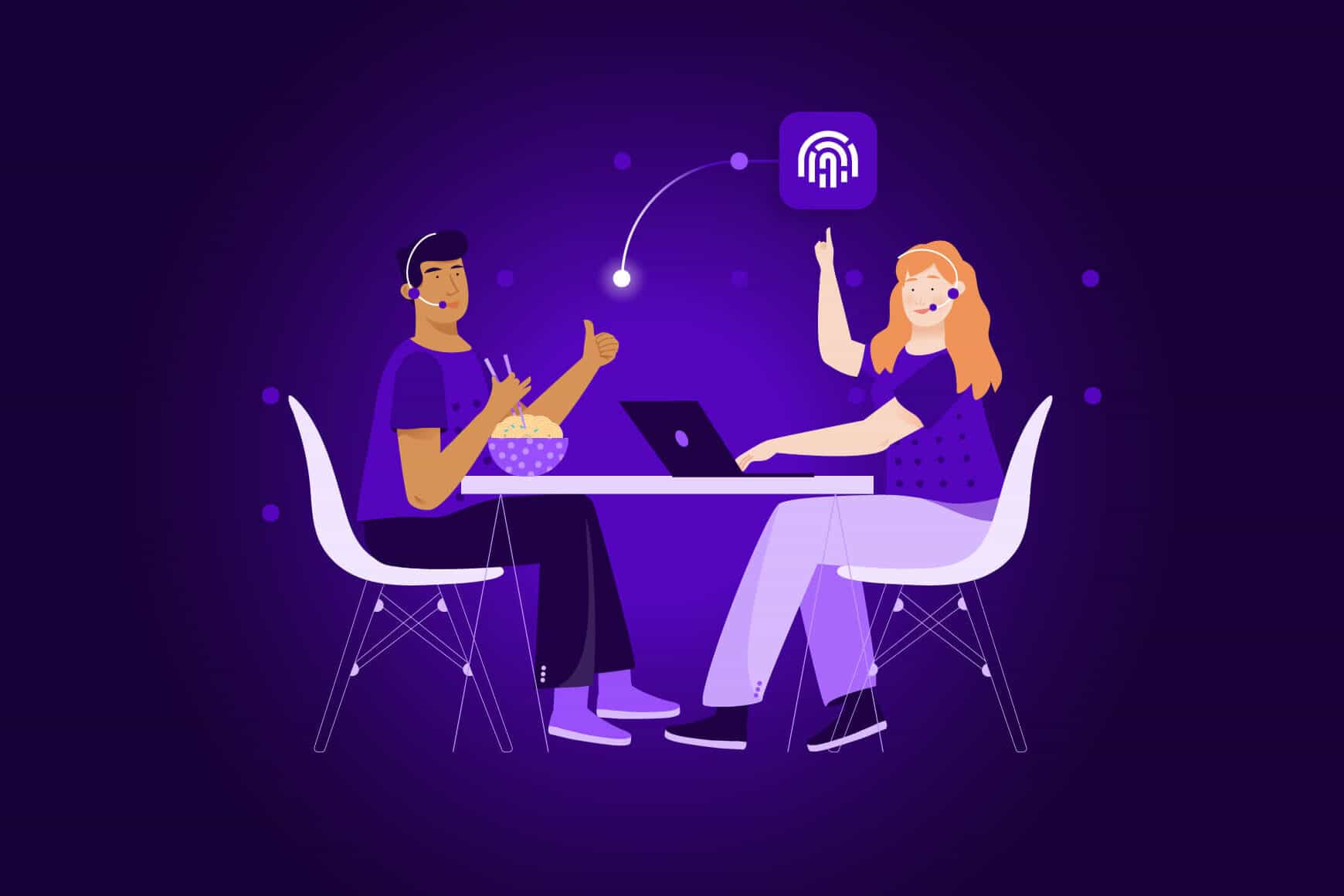How to improve FCR and increase customer loyalty

By Génesis Longo
0 min read

When trying to drive brand loyalty, improving first call resolution (FCR) in the contact center should be a retailer’s top focus.
In this day and age, with e-commerce at the forefront of many retail experiences and the seemingly endless choices of products with competitive pricing, service is becoming the differentiator.
Loyalty is more than just a points system to reward customers. Customer loyalty is, ultimately, about creating connections with customers that keep them coming back because they feel heard and seen.
Retail itself has consistently higher degrees of standards and a greater complexity of channels than any other industry. Research conducted by Talkdesk earlier this year found that the number one driver of customer loyalty is first contact resolution (FCR).
So, how can companies prioritize customer service? Or better yet, how can they improve their customer service through FCR?

Three tips on how to improve FCR.
A company is only as good as its employees, and ensuring contact center agents are equipped and empowered to solve customer issues quickly and correctly is key to improving FCR.
1. Provide a seamless customer experience.
Arguably the most important thing a retailer can do for both its customers and employees is create a seamless experience across all channels—the physical and digital experiences.
Ten years after the buzzword “omnichannel” hit the market, retailers are seeing a shift in the commerce experience. Many retailers have customer data stockpiled in different areas, creating a difficult environment for service representatives to resolve client concerns. The shift from omnichannel to a completely unified experience will allow employees to access information across all channels with a 360º view. Unfortunately, the traditional retail tech landscape is not built for this transformation.
"If we go back to that concept of unified commerce, getting all the data right is the unlock to be able to deliver the objectives around seamless and personalized experiences…The implication of this is that you may not have the technologies that matter that are in place or that are integrated in other systems but using your contact center as the way to bring all of that into a unified view is going to help unlock the value."
Shannon Flanagan, global VP of retail, Talkdesk
Talkdesk has created an AI-powered, out-of-the-box customer service platform: Talkdesk Retail Experience Cloud™. Specifically designed for retailers, it improves brand loyalty and customer lifetime value across physical and digital channels.
By creating a unified view of all customer interactions, Talkdesk Retail Experience Cloud allows retail brands to meet customers where they are—a task that has become increasingly challenging with generational differences. The platform provides brands with pre-configured retail workflows and scripts, guaranteeing valuable conversations at every turn. AI bots aid in accelerating the speed of call resolution.
Ultimately, the Talkdesk Retail Experience Cloud is designed to meet the customer’s expectations for service: fast, easy, convenient, friendly. Retailers can provide seamless and personalized experiences by relying on solutions that accelerate the speed of resolution. This can be done one of a few ways:
- Enabling communication with customers on the device of their choice.
- Providing even greater self-service.
- Identifying the proper associate needed for the customer issue.
2. Empower contact center agents.
To improve FCR and create that seamless customer experience, retail brands need to ensure their contact center agents feel empowered and prepared to face any issues that might come their way. A Talkdesk research calls out five primary challenges facing contact center agents.
- Support. CX professionals cite inadequate support from executive leadership, particularly when working remotely.
- Consistency. 42% of CX professionals report that their biggest hurdle is providing consistent engagement with customers across all channels.
- Time management. Agents responded that replying to inbound customer queries in a timely manner was a difficulty for them.
- Respect for boundaries. It was reported that tailoring interactions specific to the customer and their personal needs became difficult while simultaneously respecting customer privacy.
- Connection. While trying to maintain a meaningful connection to drive customer satisfaction, CX professionals reported it was difficult to do so virtually.
Remember: No one calls a contact center because they are happy. So, as business leaders and owners, make sure you are empathetic to your agents’ needs and ensure they have the tools and resources to do their job with as little frustration as possible. In turn, this will allow agents to be more empathetic with the customer.
As the importance of contact centers grows, CX professionals recognize their own responsibilities growing in tandem. The same Talkdesk research found that 85% of agents agreed they are expected to handle more complicated issues than a year ago. Nearly 90% of CX professionals reported that they are expected to know more about their brand’s stance on social issues than they were a year ago. Another 86% foresee customer relationship growth as a KPI within the next five years. These findings indicate the importance of the contact center agent’s role in the success of the company.
Talkdesk Retail Experience Cloud empowers agents to resolve issues efficiently and accurately. It uses AI-powered tools to reduce training, onboarding, and turnover time with agents. It equips CX professionals with multiple pieces of information on a single screen including customer history, order details, and all previous conversations with the customer. Using AI and other technology to keep data and information organized and easily attainable will improve the way customer issues are understood and addressed.
Providing easy access to this information improves efficiency and collaboration. Lastly, it personalizes opportunities for individual employees to improve their own working experience and optimize the workforce as a whole.
3. Understand and address causes of customer issues.
Another benefit of improving your FCR through AI-influenced solutions like the Talkdesk Retail Experience Cloud is that it works in real-time. There is no delayed understanding of the big picture or what the main causes of customer dissatisfaction might be. There’s also no waiting to see what’s trending with returns, product issues, or logistics issues. All of the information is at the contact center agent’s fingertips—instantaneously. This also allows retailers to use accessible data when addressing entire CX teams about recurring issues.
To remain relevant, retail brands must streamline and automate common retail inquiries and provide self-service for customers who want it. Understanding common customer issues helps limit resolve time, satisfy the customer, and make the employee’s job simpler.
Moving forward: how to improve FCR and increase loyalty.
If retailers are trying to increase brand loyalty, they need to focus on the customer; they need to improve that first contact resolution rate for both the customer the employee’s sake and the brand.
Ultimately, this begins with creating a seamless customer experience, in which customers have the option to contact an agent with their preferred method, having their needs met correctly and quickly.
Improving FCR requires employee empowerment—not just enablement—so they can efficiently resolve customer issues and optimize performance and operations to drive the profit and loss of the contact center.
Lastly, FCR improvement requires retailers to streamline and automate common customer inquiries. For instance, common questions such as, “Where is my order?” should not need to involve an agent. Customers especially want to self-serve for menial issues.
Retailers need to keep the vision of service in their sight-line, tracking trends and focusing on the customer experience. Because, ultimately, brands should move from reactive and transactional to proactive and conversational, all while improving the customer experience and focusing on first contact resolutions.
Talkdesk Retail Experience Cloud is powered by AWS. Learn more about our partnership with AWS here.








